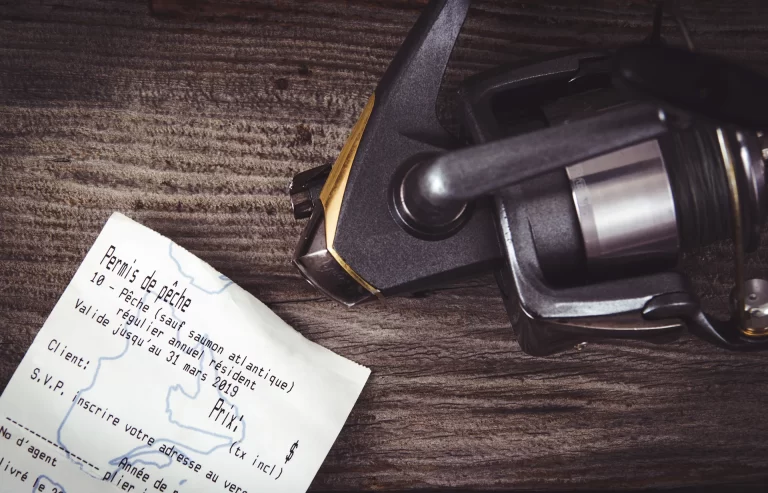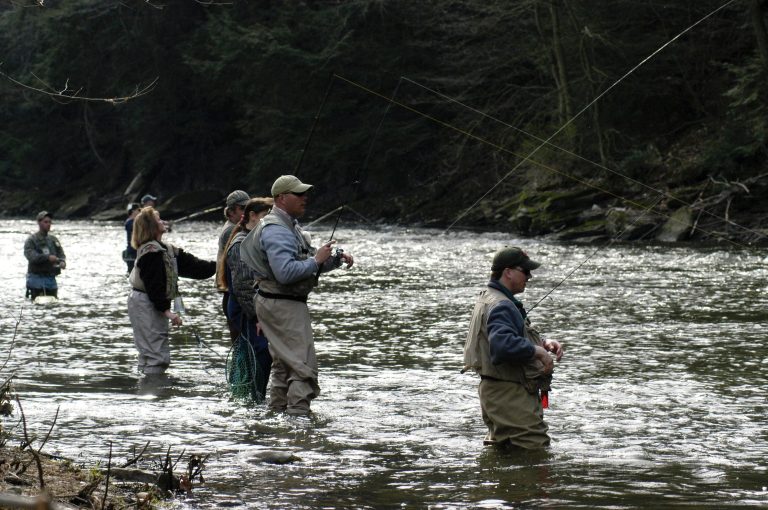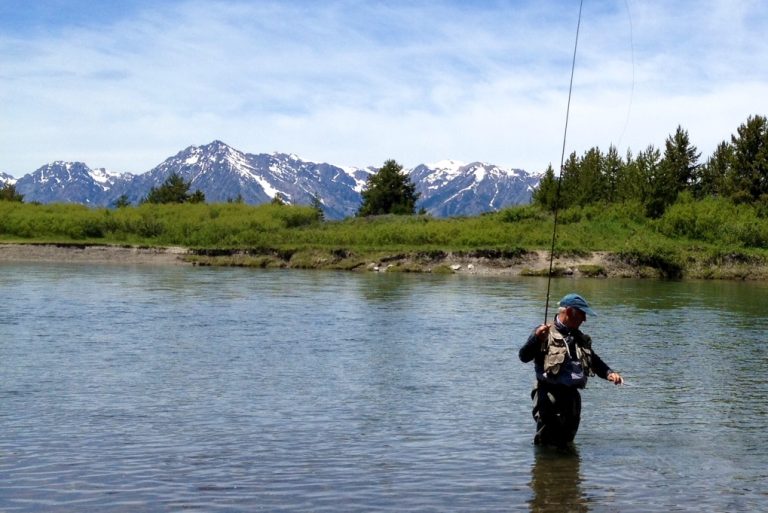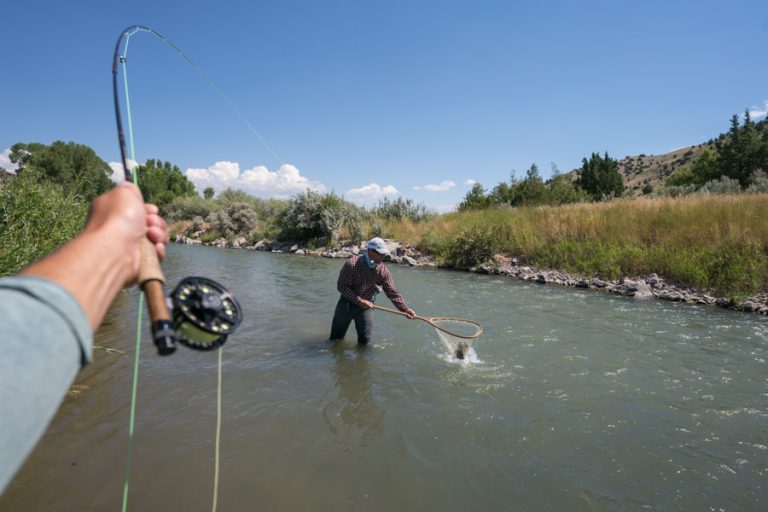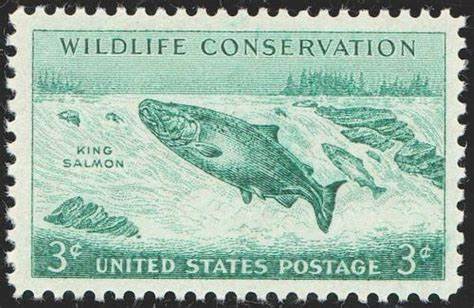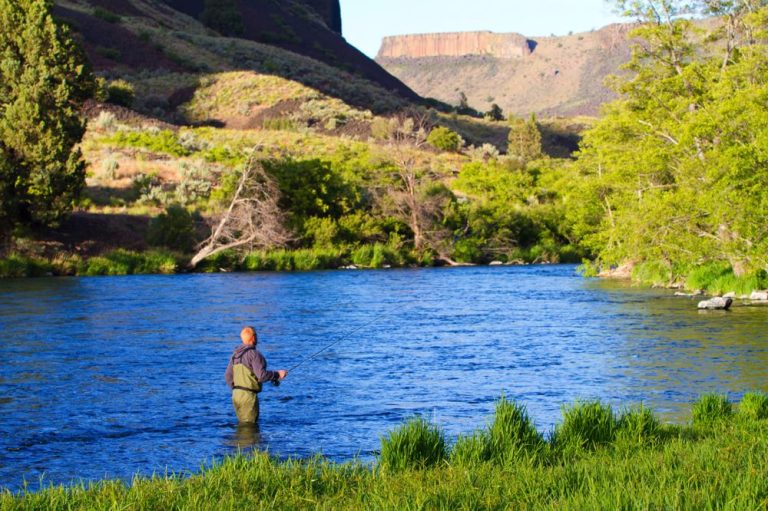Pennsylvania’s vast network of lakes, rivers, and reservoirs harbors a true angling treasure – the elusive and highly prized walleye. This iconic gamefish, with its distinctive glassy eyes and voracious appetite, has captured the hearts of anglers across the Keystone State. From the mighty waters of Lake Erie to the winding currents of the Susquehanna River, walleye fishing in Pennsylvania offers an exhilarating challenge and the promise of unforgettable encounters with this remarkable species.
Summary: Pursuing walleye in Pennsylvania is an adventure that takes anglers to premier destinations like Lake Erie, Pymatuning Reservoir, and the Allegheny River. Mastering tactics like trolling, jigging, and live bait presentations is key to success. Responsible angling practices and adherence to regulations ensure the sustainability of these cherished fisheries.
The Allure of Walleye Fishing
Walleye, also known as yellow pike or walleyed pike, are renowned for their fighting spirit and delectable flesh, making them a highly sought-after target for recreational anglers. These fish are masters of camouflage, blending seamlessly with their surroundings and often lurking in the depths, waiting to ambush their prey. Pursuing walleye requires a combination of skill, patience, and an intimate understanding of their habits and habitats.
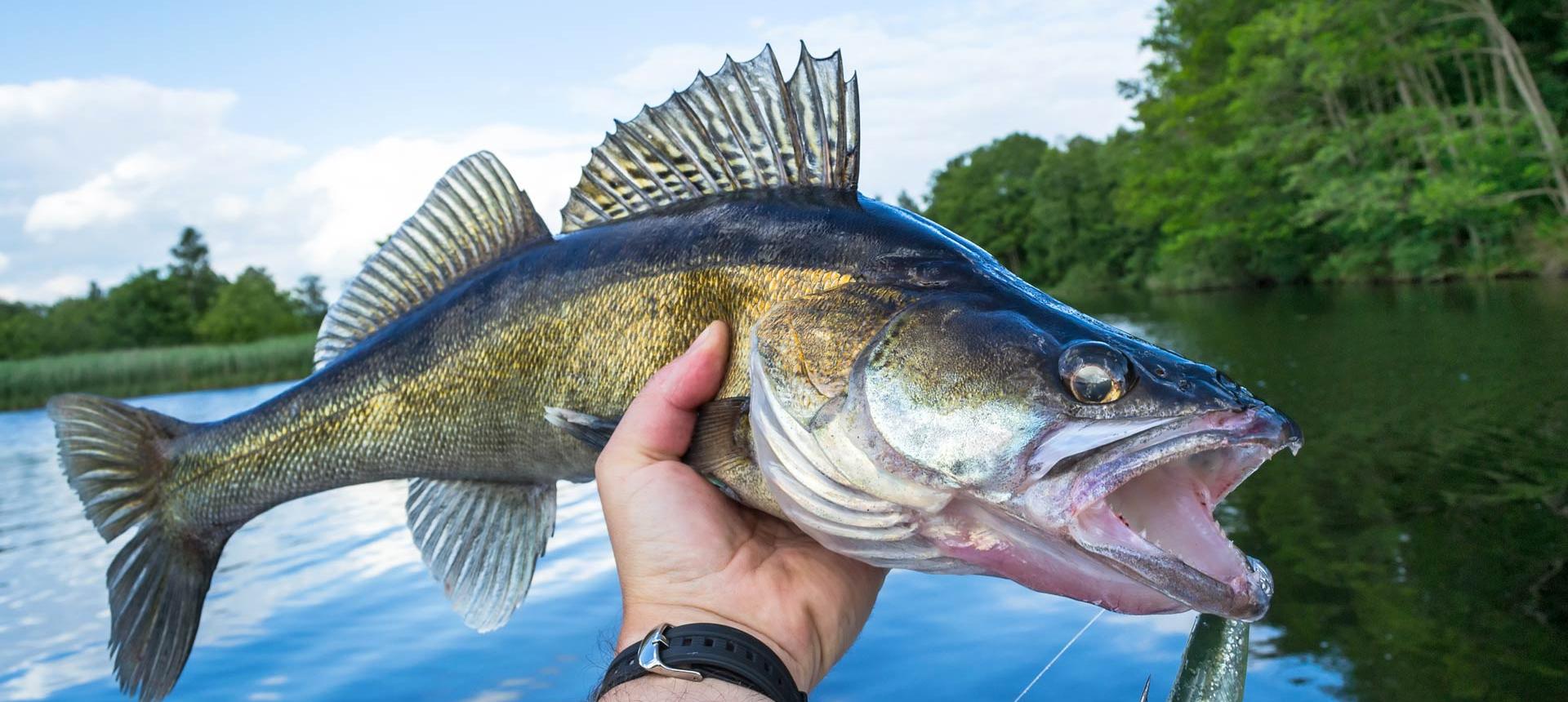

Pennsylvania’s Premier Walleye Destinations
Lake Erie
Bordering Pennsylvania’s northwestern corner, Lake Erie is a true walleye paradise. This vast inland sea offers anglers the opportunity to tangle with some of the largest and most impressive specimens in the state. The Pennsylvania waters of Lake Erie, including Presque Isle Bay and its tributaries, are renowned for their exceptional walleye fishing.
During the spring months, walleye congregate near the mouths of tributaries like Walnut Creek, providing shore-bound anglers with the chance to cast for these elusive predators from beaches and piers. As summer arrives, the walleye migrate eastward, seeking cooler waters and following schools of baitfish. Trolling with deep-diving crankbaits at depths ranging from 40 to 70 feet is a proven technique for connecting with these roaming giants.
Pymatuning Reservoir
Straddling the Pennsylvania-Ohio border, the sprawling Pymatuning Reservoir is a true walleye factory. This 17,088-acre expanse is renowned for its abundance of keeper-sized walleye, with surveys revealing staggering numbers of fish in the 15- to 24-inch range.
Anglers can find success throughout the year at Pymatuning, with spring and fall offering particularly productive bites in shallow waters along the eastern shoreline. During the summer months, walleye follow schools of shad into the reservoir’s main basin, where trolling with worm harnesses or jigging spoons can yield impressive catches.
Raystown Lake
Nestled in the picturesque Allegheny Mountains, Raystown Lake is a hidden gem for walleye enthusiasts. This scenic reservoir offers ample opportunities for both shore and boat anglers to pursue these elusive quarries.
Spring and fall are prime times to target walleye at Raystown, with early mornings and evenings being particularly productive. From the shoreline, anglers can cast jigs or live bait near rocky points and coves, while boaters can troll with diving crankbaits or worm harnesses, targeting submerged structures and drop-offs.
Tactics and Techniques
Successful walleye fishing in Pennsylvania often requires a diverse arsenal of tactics and techniques. Live bait, such as minnows, leeches, and nightcrawlers, fished on jig heads or slip rigs near the bottom, can be highly effective. Lures like jigs, crankbaits, twisters, and spinners in bright colors like green, yellow, gold, silver, black, and purple can also trigger strikes from these light-sensitive predators.
Trolling is a popular and productive method, allowing anglers to cover vast expanses of water and locate active fish. Vertical jigging with spoons or blade baits can also be deadly, especially when targeting walleye suspended over deep structure or along drop-offs.
Conservation and Regulations
Walleye fishing in Pennsylvania is a cherished tradition, and responsible angling practices are essential to ensure the sustainability of these remarkable fisheries. The Pennsylvania Fish and Boat Commission (PFBC) implements regulations and management strategies to protect and enhance walleye populations.
Anglers are required to possess a valid Pennsylvania fishing license and adhere to size and creel limits, which vary depending on the body of water. Additionally, certain areas may have special regulations or seasonal closures to protect spawning walleye or maintain healthy populations.
By respecting these regulations and practicing catch-and-release when appropriate, anglers can contribute to the long-term preservation of Pennsylvania’s walleye fisheries, ensuring that future generations can experience the thrill of pursuing these elusive gamefish.
Walleye Fishing Tips and Tactics
To increase your chances of success when pursuing walleye in Pennsylvania, consider the following tips and tactics:
Live Bait Presentations
- Minnows: Lively minnows are a walleye’s favorite prey. Rig them on a jig head or slip sinker rig, and fish them near the bottom in areas with structure or current breaks.
- Nightcrawlers: These wiggly offerings can be irresistible to walleye, especially when fished on a slip sinker rig or threaded onto a jig head.
- Leeches: Leeches are a top choice for walleye anglers, particularly during the summer months. Rig them on a jig head or slip sinker rig, and fish them near the bottom in deeper waters.
Lure Selections
- Jigs: Dress up a lead-head jig with a soft plastic trailer or live bait, and work it vertically or cast and retrieve it along structure and drop-offs.
- Crankbaits: Lipless and diving crankbaits in bright colors like fire tiger, chartreuse, and white can trigger aggressive strikes from walleye. Troll them or cast and retrieve them along weed edges and structure.
- Spinners: Dressed with a live minnow or soft plastic trailer, spinners like the Mepps or Rooster Tail can be deadly when retrieved through walleye-holding areas.
- Blade Baits: Vertical jigging with a vibrating blade bait like the Heddon Sonar or Reef Runner can be an effective way to trigger strikes from suspended or bottom-hugging walleye.
Trolling Tactics
- Worm Harnesses: Trolling a worm harness rigged with nightcrawlers or soft plastic baits can be a productive way to cover water and locate active walleye.
- Crankbaits: Deep-diving crankbaits like the Rapala Husky Jerk or Reef Runner Deep Little Rip Shad can be trolled to target walleye suspended or relating to structure in deeper waters.
- Planer Boards: Using planer boards to spread out your lure spread can be an effective way to cover more water and increase your chances of connecting with walleye.
Time and Conditions
- Low Light: Walleye are known for their exceptional low-light vision, making dawn, dusk, and nighttime prime periods for targeting them.
- Overcast Days: Cloudy or overcast conditions can trigger walleye to feed more aggressively throughout the day.
- Wind and Chop: A moderate chop on the water can position baitfish and walleye along windblown shorelines or structure, creating prime feeding opportunities.
Remember, walleye fishing often requires patience and persistence. By employing a variety of tactics and techniques, and paying close attention to conditions, you can increase your chances of tangling with these elusive gamefish in Pennsylvania’s waters.
Regulations and Conservation
Responsible angling practices and adherence to regulations are crucial for ensuring the sustainability of Pennsylvania’s walleye fisheries. Here are some key points to keep in mind:
- Fishing License: All anglers 16 years and older are required to possess a valid Pennsylvania fishing license when fishing for walleye or any other species.
- Seasons and Limits: Walleye seasons and creel limits vary depending on the body of water. Consult the Pennsylvania Fish and Boat Commission’s website or the annual fishing regulations summary for up-to-date information.
- Special Regulations: Certain waters may have special regulations or seasonal closures in place to protect spawning walleye or maintain healthy populations. Be sure to familiarize yourself with these regulations before fishing.
- Catch and Release: Practice catch-and-release when appropriate, especially for larger breeding-sized walleye. Proper handling and release techniques can help ensure the survival of released fish.
- Conservation Efforts: A portion of the revenue generated from fishing license sales and other fees goes towards supporting the PFBC’s walleye stocking and management efforts, as well as habitat restoration and public access initiatives.
By respecting these regulations and supporting conservation efforts, anglers can play a vital role in preserving Pennsylvania’s walleye fisheries for future generations to enjoy.
Walleye Fishing Hotspots in Pennsylvania
While walleye can be found in numerous waterways across the state, here are some of the top hotspots for pursuing these elusive gamefish:
| Location | Highlights |
|---|---|
| Lake Erie | World-class walleye fishery, especially in the Pennsylvania waters around Presque Isle Bay and its tributaries. Shore fishing opportunities in spring, offshore trolling in summer. |
| Pymatuning Reservoir | Abundant population of keeper-sized walleye, with fish in the 15-24 inch range common. Productive throughout the year, with prime shallow water bites in spring and fall. |
| Allegheny River | Renowned for producing trophy-sized walleye, with fish over 10 pounds not uncommon. The Middle Allegheny section from Kinzua Dam to Brady’s Bend is a top destination. |
| Raystown Lake | Scenic reservoir in the Allegheny Mountains, offering excellent walleye fishing from both shore and boat. Prime times are spring and fall. |
| Lake Wallenpaupack | The second-largest lake entirely within Pennsylvania, with a thriving walleye population sustained through stocking efforts. |
| Susquehanna River | One of the state’s premier walleye rivers, with ample opportunities for both shore and boat anglers to target these prized gamefish. |
Remember, these are just a few of the many walleye fishing destinations in Pennsylvania. With a little research and exploration, anglers can uncover hidden gems and create their own walleye fishing adventures across the Keystone State.
Walleye Fishing Gear and Tackle
To increase your chances of success when pursuing walleye in Pennsylvania, it’s essential to have the right gear and tackle. Here are some recommendations:
Rods and Reels
- Spinning Rods: A 6’6″ to 7′ medium or medium-heavy power spinning rod is a versatile choice for walleye fishing. Look for rods with a fast or moderate-fast action for improved sensitivity and hook-setting power.
- Baitcasting Rods: For trolling or casting larger lures, a 6’6″ to 7’6″ medium or medium-heavy power baitcasting rod can be an excellent option.
- Reels: Pair your rods with high-quality spinning or baitcasting reels that can handle braided or monofilament lines in the 10-20 lb test range.
Lines
- Monofilament: For live bait presentations or vertical jigging, a 10-12 lb test monofilament line can provide the necessary abrasion resistance and shock strength.
- Braided Line: When casting or trolling lures, a 20-30 lb test braided line can offer increased sensitivity and lure control, while maintaining a thin diameter for long casts.
- Fluorocarbon Leaders: Consider using a fluorocarbon leader material when fishing clear waters, as it has a higher density and refractive index similar to water, making it less visible to fish.
Lures and Baits
- Jigs: Stock up on 1/4 to 3/4 oz jig heads in various colors like white, chartreuse, and fire tiger. Dress them with soft plastic trailers or live bait like minnows or nightcrawlers.
- Crankbaits: Deep-diving crankbaits like the Rapala Husky Jerk, Reef Runner Deep Little Rip Shad, or Storm ThunderStick are excellent choices for trolling or casting.
- Spinners: Mepps and Rooster Tail spinners in sizes 3-5 can be deadly when dressed with live bait or soft plastic trailers.
- Blade Baits: Vibrating blade baits like the Heddon Sonar or Reef Runner can trigger strikes from walleye when vertically jigged or cast and retrieved.
- Live Bait: Stock up on lively minnows, nightcrawlers, and leeches for live bait presentations.
Accessories
- Planer Boards: These devices can help spread out your lure spread when trolling, increasing your chances of connecting with walleye.
- Line Counter Reels: Reels with line counters can be invaluable for precisely controlling lure depth and presentation when trolling or vertical jigging.
- Fish Finders: A quality fish finder can help locate structure, baitfish, and walleye, increasing your chances of success.
- Landing Net: A sturdy landing net with a long handle can help safely bring your hard-earned walleye catch into the boat or onto shore.
By investing in the right gear and tackle, and pairing it with the appropriate techniques and presentations, you’ll be well-equipped to take on the challenge of pursuing Pennsylvania’s elusive walleye.
Conclusion
Walleye fishing in Pennsylvania is a true angler’s adventure, offering the opportunity to test one’s skills against a formidable and highly sought-after adversary. From the vast expanse of Lake Erie to the hidden gems of the state’s reservoirs and rivers, these elusive gamefish await those willing to embrace the challenge.
By mastering the tactics and techniques, respecting the regulations, and appreciating the conservation efforts that sustain these fisheries, anglers can embark on a journey that promises unforgettable encounters and the chance to etch their names into the annals of Pennsylvania’s walleye fishing lore.
So, grab your rod, tie on your favorite lure, and prepare to experience the walleye wonders that await in the waters of the Keystone State.
